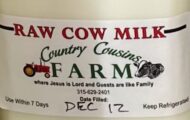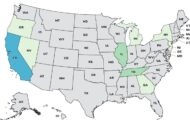The U.S. Department of Agriculture’s Food Safety and Inspection Service (USDA- FSIS) has released the cost analysis for testing six additional Shiga toxin-producing E.coli (STEC) strains. The analysis was posted in a November 19 notice in the Federal Register.
 Some strains of E.coli, such as E.coli O157:H7, produce toxins called Shiga toxins. Infections from STEC cause hemorrhagic colitis, which causes the bloody diarrhea associated with E. coli O157:H7 infections. If the toxins, leave the digestive tract and travel to the bloodstream, it can cause hemolytic uremic syndrome (HUS) and/or thrombotic thrombocytopenic purpura (TTP). HUS and TTP cause serious, life-threatening injury such as kidney failure, seizure, stroke and coma.
Some strains of E.coli, such as E.coli O157:H7, produce toxins called Shiga toxins. Infections from STEC cause hemorrhagic colitis, which causes the bloody diarrhea associated with E. coli O157:H7 infections. If the toxins, leave the digestive tract and travel to the bloodstream, it can cause hemolytic uremic syndrome (HUS) and/or thrombotic thrombocytopenic purpura (TTP). HUS and TTP cause serious, life-threatening injury such as kidney failure, seizure, stroke and coma.
Before 2011, E. coli O157:H7 was the only strain of E.coli considered an “adulterant,” meaning it is illegal to sell beef contaminated with the strain but legal to sell beef contaminated with other strains, until someone gets sick. E.coli O157:H7 was declared an adulterant in 1994, following the Jack in the Box E.coli outbreak that sickened hundreds of people and killed four including a young boy.
But E.coli O157:H7 is not the only strain of E.coli that can cause serious illness or death. The strains E. coli O26, E. coli O45, E.coli O103, E.coli O111, E.coli O121, E.coli O145 all produce Shiga toxins. FSIS estimated that banning the six additional STEC strains, The Big Six, would reduce by 110,000 the number of foodborne illnesses reported in the U.S. each year. So, since June 4, 2012, E. coli O157:H7 and The Big Six strains have all been considered considered adulterants. At that time FSIS began testing beef trim for those strains.
Before the testing began, FSIS estimated that the additional tests would cost and additional: $204,050 to $338,270 per year to the agency for analysis of the tests, $12.3 million to $16.4 million per year to establishments for tests, and between $12.1 to $16.1 million per year to establishments in lost revenue from contaminated products diverted from sale.
The actual cost was much lower than estimated, about $1.37 million for the agency and establishments combined. “If FSIS were to expand the testing to bench trim, other components, and raw ground beef, it will add another $1 million to the cost and bring up the grand total to about $2.37 million. Of the $2.37 million, $1.38 million is for FSIS and $0.99 million for the industry,” according to the report.




